Showing 281–290 of 1175 results
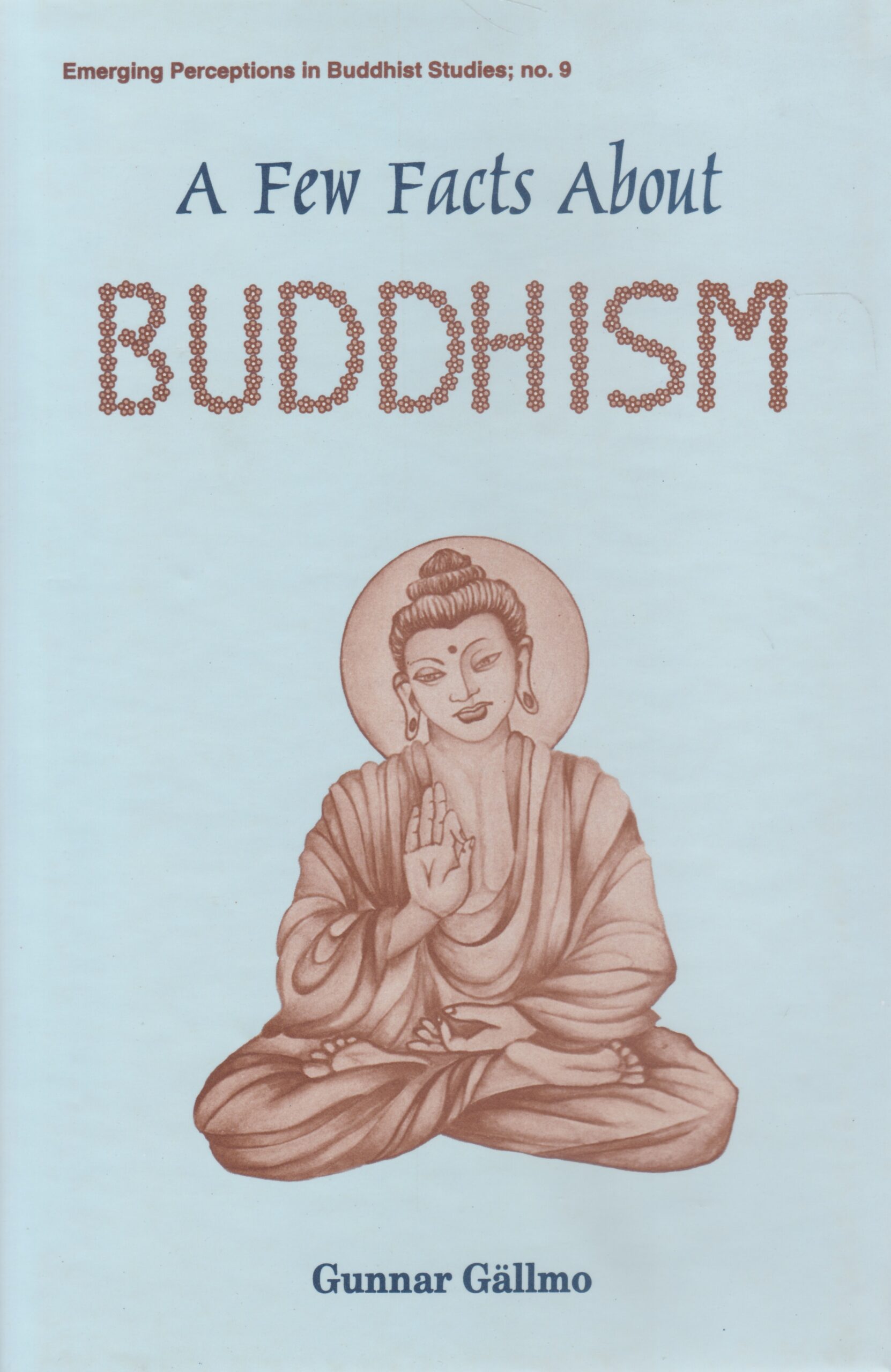
Marshalling facts from the oldest preserved texts, this work studies the Teacher (the Buddha), the Teaching (Dhamma) and the Taught (Samgha) throughout Buddhisms history. It makes a comparative study of Buddhas original teachings and later Buddhist traditions.
Today, when political ideologies/ isms are crashing down and when, at the other end, the great monotheistic religions are trying to survive by turning their backs on logical thinking and intellectual consistency, it might be worthwhile taking a look at the alternatives that by-pass the lopsided views of both materialism and idealism the alternatives that do not have to explain how an omnipotent and all-benvolent God can permit evil, nor how human barbarism can persist doggedly in a progressing world society. And among these alternatives, Gunnar Gallmo rediscovers the oldest existing world religion: the first historically documented case of international (or perhaps non-national) thinking, a teaching that may, more or less, directly or indirectly, positively or negatively, have influenced all later religious, philosophical and political teachings: Buddhism. From the vast corpus of the oldest preserved texts, Gunnar Gallmo marshals facts around Buddhism quintessentially, authentically. His book is a well-knit, at once compelling presentation of the Teacher (the Buddha), the Teaching (Dhamma/Dharma), and the Taught (the Samgha/the Community) throughout the 2500-year-long history of Buddhism: first in India, then in Asia and, finally, today in the world. And since Buddhism is a religion with an actual historical personage as its founder, the author tries to explore how the Enlightened Masters original teaching underwent a change in later tradition, and how the differences between the two have cropped up. With a glossary of Pali/Sanskrit terms and highly significant bibliographic references, this treasury of facts about Buddhism is bound to fascinate scholars and general readers alike.
This is an annotated English translation of Vijñānabhikṣu’s commentaries on the first five Brahmasūtra (BS) of Bādarāyaṇa called the Vijñānāmṛtabhāṣya (VijBh). This is a pioneering work as no translation of the VijBh has been done so far. Bhikṣu is perhaps the only known Vedānta scholar who has argued for Brahman along with his prakṛti-śakti being the cause of the world. He calls his Advaita philosophy as Avibhāga-Advaita and sets himself against Śaṅkara’s Advaita which argues for Brahman alone being the material and efficient cause of the world. Bhikṣu is also an unique Advaita scholar as he interprets Vedānta using Sāṁkhya/Yoga principles. One of the reasons for choosing to comment on only the first five sūtras was because the VijBh is a huge work and also because Bhikṣu’s Avibhāga-Advaita can easily be understood from his commentaries on these first five sūtras of the BS. Even though the real reason for Bhikṣu’s commentary on the fifth sūtra (BS I.1.5) should be clear to anyone familiar with Vedānta’s objection to prakṛti being the cause of the world, it needed to be seen as to how Bhikṣu, as a committed Sāṁkhya-Yoga-Vedāntācārya, defends prakṛti’s role in being the cause. Just as writing commentaries on the first four sūtras of Śaṅkara’s BSBh done by some eminent scholars present the main features of Śaṅkara’s Advaita, the commentaries on the first five sūtras of the BS by Bhikṣu could adequately present Bhikṣu’s Avibhāga-Advaita Vedānta.
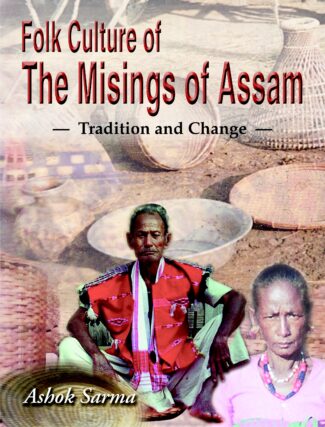
The book is an in-depth study of the socio-cultural life of the Mising tribe of Assam. It studies the factors influencing their material culture, traditional life pattern, art and craft activity et al. and tries to analyze the impact of modernisation, acculturation and urbanization faced by them.
The book is an in-depth study of the socio-cultural life of the Mising tribe of Assam, the second largest among the plain tribes of Assam. Studying their oral narratives, it deals with the factors that influence the material culture of the tribe and delve, broadly, into their folk art, craft, architecture, costumes and ornaments and food. It examines the way their traditional life pattern and legends, myths and tales are interwoven in aspects of their artistic and cultural life, painting and sculpture, specific preoccupations as that of doll-making and the tradition of swastika emblems, for instance. Dr. Sarma studies a vast range of their art and craft activity: weaving and embroidery, designs depicted, cane and bamboo works, wood works, metallic tools and other implements, earthen pottery, aspects of building, traditional cooking process and food types and preservation. He, significantly, tries to analyse the process of modernisation, acculturation and urbanization the Misings are undergoing and the impact of these factors on the tribes people which is resulting in, among other things, erosion of their traditional life and folk culture. The work will interest students and scholars of Indian anthropology, sociology and specifically of folk cultures and traditions. General readers will also find the work extremely interesting and informative.
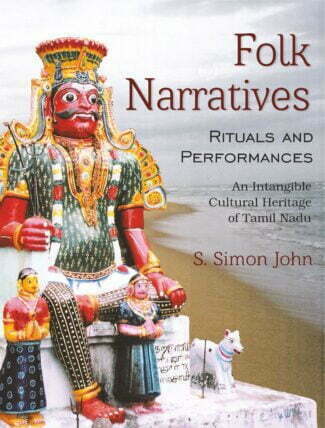
This illustrative monograph systematically documents, investigates and discusses different aspects of Intangible Cultural Heritage (ICH) of Tamil Nadu childrens folklore, proverbs, material folk culture, oral narratives, folk gods and goddesses, and ritual practices and enables one to grasp the rich cultural heritage of Tamil Nadu at ease.
Folk Narratives: Rituals and Performances reflects the world-view of the traditional societies and it is considered as an Intangible Cultural Heritage (ICH) of a particular community or society. This study investigates the culture, in a particular sociocultural context, of the multifaceted Tamil society through numerous rituals, offerings, vows, customs, practices, belief systems, performing folk arts, fairs and festivals, dance and music, material culture, etc. which are deeply rooted in their cultural moorings, and practised and closely associated with the folk religion, life-cycle ceremonies and social psychology.
This illustrative monograph systematically documents, investigates and discusses different aspects of ICH of Tamil Nadu childrens folklore, proverbs, material folk culture, oral narratives, folk gods and goddesses, and ritual practices. A number of colourful photographs enable one to grasp the rich cultural heritage of Tamil Nadu at ease.
The monograph will be of interest to scholars and researchers across humanities and social sciences especially those in folklore, anthropology, sociology, cultural studies, religion, ritual studies, art and performance studies. It will also appeal to the general reader.

The folk songs in this collection are given in vernacular Hindi language, transliterated and translated, to reach readers with different backgrounds. These songs tell the story and customs of celebrating life-cycle ceremonies, welcoming seasons, and related mythology.
Blowing of a conch-shell and/or ringing of a hand bell and/or singing a song to welcome the evening twilight in front of a tulsi plant is a nostalgic scene from Indias past. For the majority of the young Indian population, this daily routine is only depicted on picture postcards or in Bollywood movies. Folk songs in this book were recorded in the 1970s. Since Independence, India has been undergoing fast technological advances; a wave of new internationalism is absentmindedly sweeping away rural traditions. Singing and playing of traditional folk songs and ensembles for appropriate ceremonies are becoming less and less popular; instead, movie songs and modern brass bands are appreciated. Each folk song in this collection is like an artefact in an archaeological museum. These songs tell the story and customs of celebrating life-cycle ceremonies, welcoming seasons, and retelling our mythology. The songs are given in vernacular Hindi language, transliterated, and translated, to facilitate understanding by readers with different backgrounds. The original field recordings have been deposited at the Archives and Research Center for Ethnomusicology of the American Institute of Indian Studies at Gurgaon, Haryana, India, where they are available for listening and recording details.
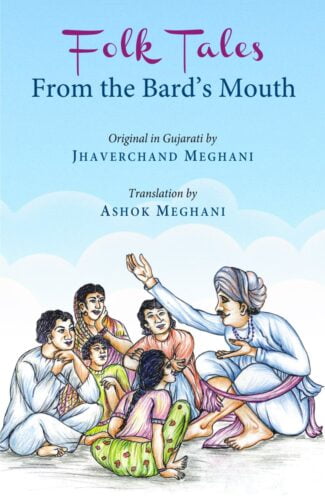
This book, translation of ten stories by the famous Gujarati writer Jhaverchand Meghani, reflects the rich folklore culture of both Kathiawad and Saurashtra regions. These stories are of much currency in Gujarat.
The Kathiawad peninsula in Western India boasts a rich heritage of oral traditions. The Charan and Barot communities were especially known for their unique storytelling styles. Jhaverchand Meghani, the author, suggests that much of the main subject matter comes from stories in the Sanskrit epics like Panchatantra and Kathasaritsagar, as also from legends created around historical figures like King Vikram of Ujjain. These orally told stories were handed down from generation to generation, and were further enhanced by each storytellers creativity in injecting elements that would help the story move forward while holding the listeners interest.
This book contains ten stories told in such unique style, collected in the 1920s, and published in Gujarati using the exact words as used by the storytellers. The objective of this English collection has been to preserve the original oral style and content as much as possible in a translation to culturally so different a language form.
The authors two scholarly treatises analyse this storytelling style, and provide a comparison with similar stories from other parts of India as well as the West. The author also draws conclusions of his own about the origins and the spread of these stories. These treatises may be of great interest to students and scholars of folklore, perhaps leading to further research.
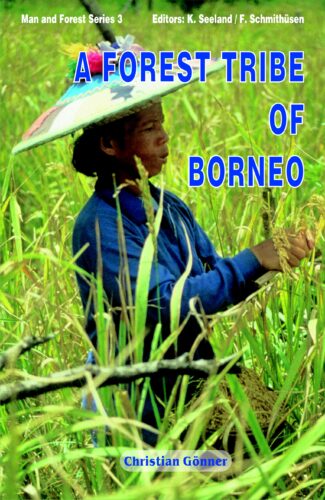
Christian Gnner takes the reader to the Dayak Benuaq village of Lempunah in Borneo (Indonesia), offering an insightful analysis of the resource use patterns of the local tribal population covering swidden agriculture, mixed forest gardens, rattan gardens, rubber gardens, and the non-cultivated forest in-between and temporal and spatial aspects of life.
Here is the third volume in the series Man and Forest: a series trying to highlight the relevance of indigenous knowledge of various tribal communities in the sustainable management of forests/local resources against the growing challenges of environmental hazards and a declining resource base. The volume takes the reader to the Dayak Benuaq village of Lempunah in Borneo (East Kalimantan, Indonesia) where, for over three hundred years, the local tribal population has made extensive use of its forest resources. More than a hundred locally-differentiated rice varieties and 150 other crops are cultivated over a mosaic forest of 9,200 ha. Besides maintaining a high level of bio-diversity, Lempunah villagers are managing an enormous reservoir of flora and fauna for their extended subsistence economy, including trade with various forest products over long distances. Market fluctuations and other uncertainties here are coped with by resource diversification and a high dynamic flexibility in switching between the use of resources. Together with vivid descriptions, Christian Gonner offers an insightful analysis of local resource use patterns, covering swidden agriculture, mixed forest gardens, rattan gardens, rubber gardens, and the non-cultivated forest in-between and temporal and spatial aspects of life in Lempunah. Christian Gonner has, for this study, applied ethnological, ecological, and geographical field-research methods.

This is the sixth monograph in the series Man and Forest and the second volume to deal with an Aboriginal tribe of Orissa. The authors, after ten years of intensive research, give an account of how the Kuttia Kondh, a tribal community in transition, classify the components of nature, and of their social organisation, religious beliefs, etc.
In the management of renewable resources, forests have undeniably a vital role, and today, as never before, their conservation is an urgency. In view of this dire necessity the series Man and Forest tries to highlight the relevance of indigenous knowledge of various South Asian tribal communities in the sustainable management of forests/local resources more specially against the growing challenges of economic development vis-a-vis environmental hazards and a rapidly declining resource base. A scientific inquiry into indigenous knowledge is an effort to discover/rediscover the tribals traditional modes of production and conservation. For them it is the only source to cope with the problems of modernity affecting their lives and precarious environments. Forest Tribes of Orissa: The Kuttia Kondh is the sixth monograph in the series Man and Forest and, after the publication of an account of the forest world of the Dongaria Kondh in 2002, the second volume to deal with an aboriginal tribe of Orissa. Being a tribal community in transition, the authors have tried to document and thus safeguard its local traditional knowledge of conservation, use and management of forests and natural resources. They give an account of how the Kuttia Kondh classify trees and other plants, hills, forests, crops and animals. Their subsistence economy, agricultural system, social organization, religious beliefs and other important socio-cultural aspects of forest life have been extensively treated. The lifestyle of this tribal community is finally reflected on the background of forest policy and the impact it has on their livelihood. The present book is, as most of the volumes in the series, the outcome of nearly ten years research venture involving an interdisciplinary, intercultural team of sociologists, ethnobotanists, social anthropologists and other social scientists.
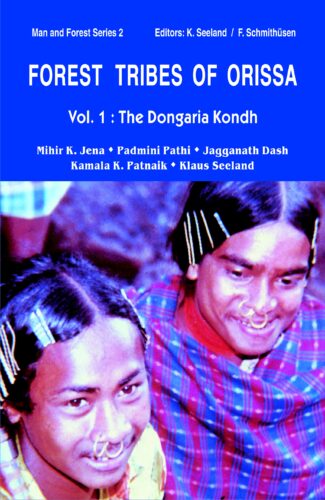
The study documents the Dongaria Kondh tribal communitys traditional knowledge of their natural environment: how they classify trees, plants, hills, forests, crops and soils and how they have been managing their forests. Meticulously delineated are the Dongarias geographical landscape, economy, socio-political organisation, oral traditions and other socio-cultural aspects.
In the management of renewable resources, forests have undeniably a vital role and today, as never before, their conservation is an urgency. In view of this dire necessity, the series Man and Forest tries to highlight the relevance of indigenous knowledge of various South Asian tribal communities in the sustainable management of forests/local resources more specially against the growing challenges of economic development vis-a-vis environmental hazards and a rapidly declining resource base. A scientific inquiry into indigenous knowledge is an effort to discover/ rediscover the tribals traditional modes of production and conservation. For them it is the only source to cope with the problems of modernity affecting their lives and precarious environments. Forest Tribes of Orissa: The Dongaria Kondh is the second book in the series of monographs of Man and Forest, and the first focussing on a tribal community today caught in the transition between an autochthonous lifestyle and fragments of modernity. The authors attempt to document the Dongarias traditional knowledge of their natural environment; how they classify trees, plants, hills, forests, crops, and soils; and how so far they have been managing their forests. Also meticulously delineated, as a backdrop to this study, are the Dongarias geographical landscape, economy, socio-political organisation, oral traditions, belief cosmos, and other relevant socio-cultural aspects. The present book is, as most of the volumes in the series, the outcome of nearly ten-years research venture involving an interdisciplinary, intercultural team of sociologists, ethnobotanists, social anthropologists and other social scientists.
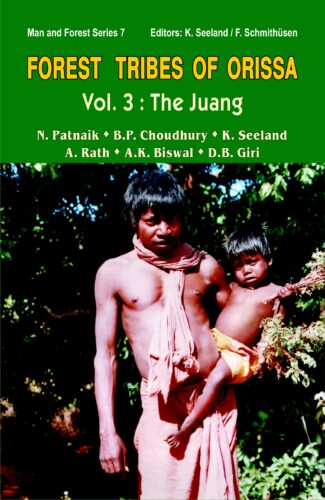
The authors have tried to document and safeguard the local traditional knowledge of conservation, use and management of forests and natural resources of the Juangs, a tribal community of Orissa. Their subsistence economy, agricultural system, social organization, religious beliefs and other important socio-cultural aspects of forest life have been extensively treated.
In the management of renewable resources, forests have undeniably a vital role, and today, as never before, their conservation is an urgency. In view of this dire necessity the series Man and Forest tries to highlight the relevance of indigenous knowledge of various South Asian tribal communities in the sustainable management of forests/local resources more specially against the growing challenges of economic development vis-à-vis environmental hazards and a rapidly declining resource base. A scientific inquiry into indigenous knowledge is an effort to discover/rediscover the tribals’ traditional modes of production and conservation. For them it is the only source to cope with the problems of modernity affecting their lives and precarious environments. Forest Tribes of Orissa: The Juang is the seventh monograph in the series Man and Forest and, after the publication of an account of the forest world of the Dongaria Kondh in 2002, and the Kuttia Kondh in 2006. Being a tribal community in transition, the authors have tried to document and thus safeguard its local traditional knowledge of conservation, use and management of forests and natural resources. They give an account of how the Juang classify trees and other plants, hills, forests, crops and animals. Their subsistence economy, agricultural system, social organization, religious beliefs and other important socio-cultural aspects of forest life have been extensively treated. The lifestyle of this tribal community is finally reflected on the background of forest policy and the impact it has on their livelihood. The present book is, as most of the volumes in the series, the outcome of nearly ten years’ research venture involving an interdisciplinary, intercultural team of sociologists, ethnobotanists, and social anthropologists
| There are no products |